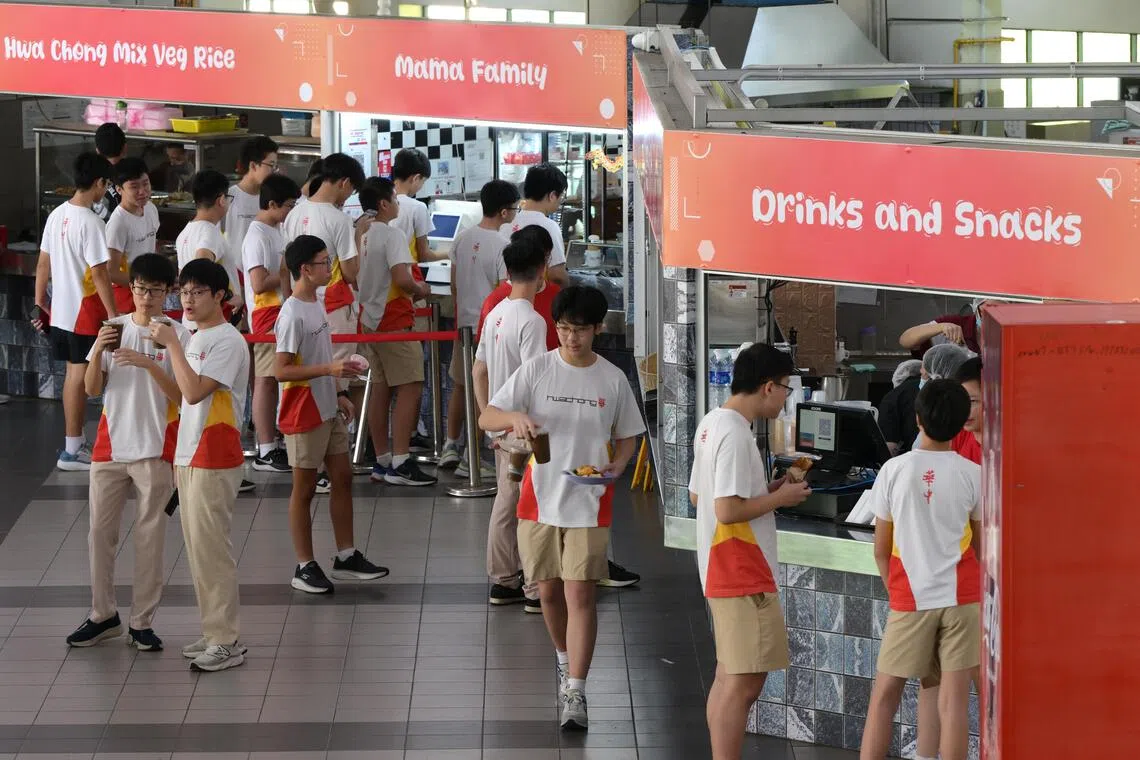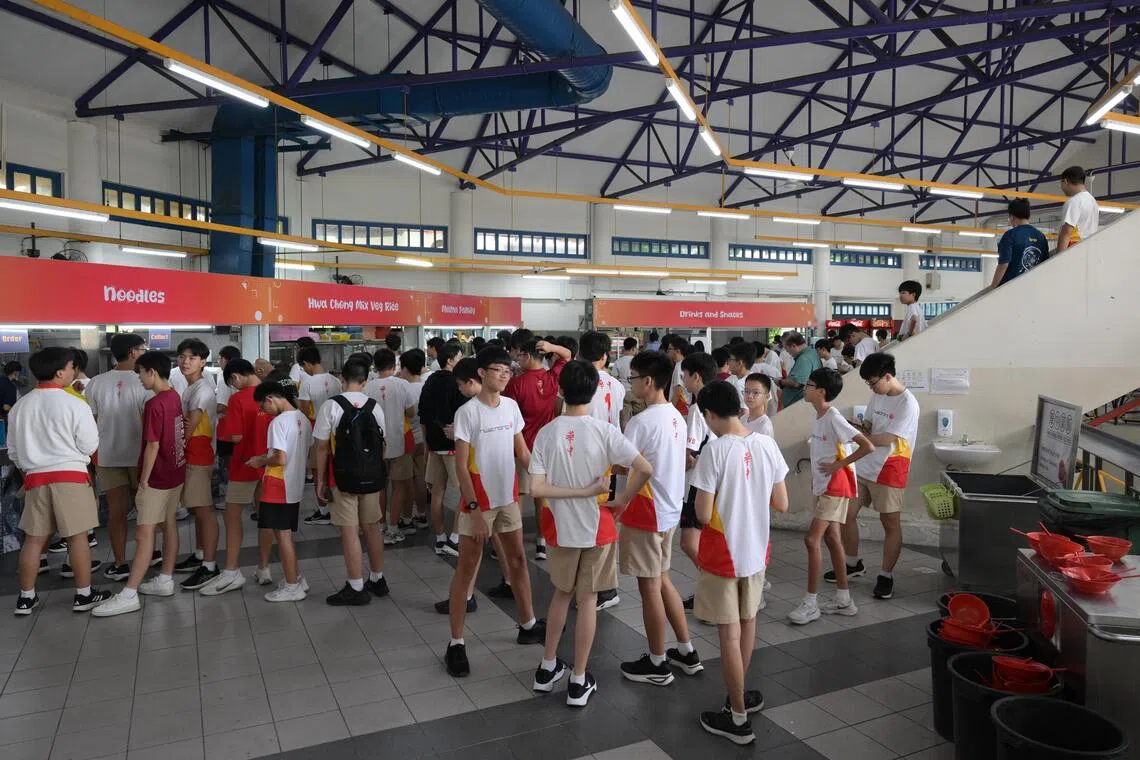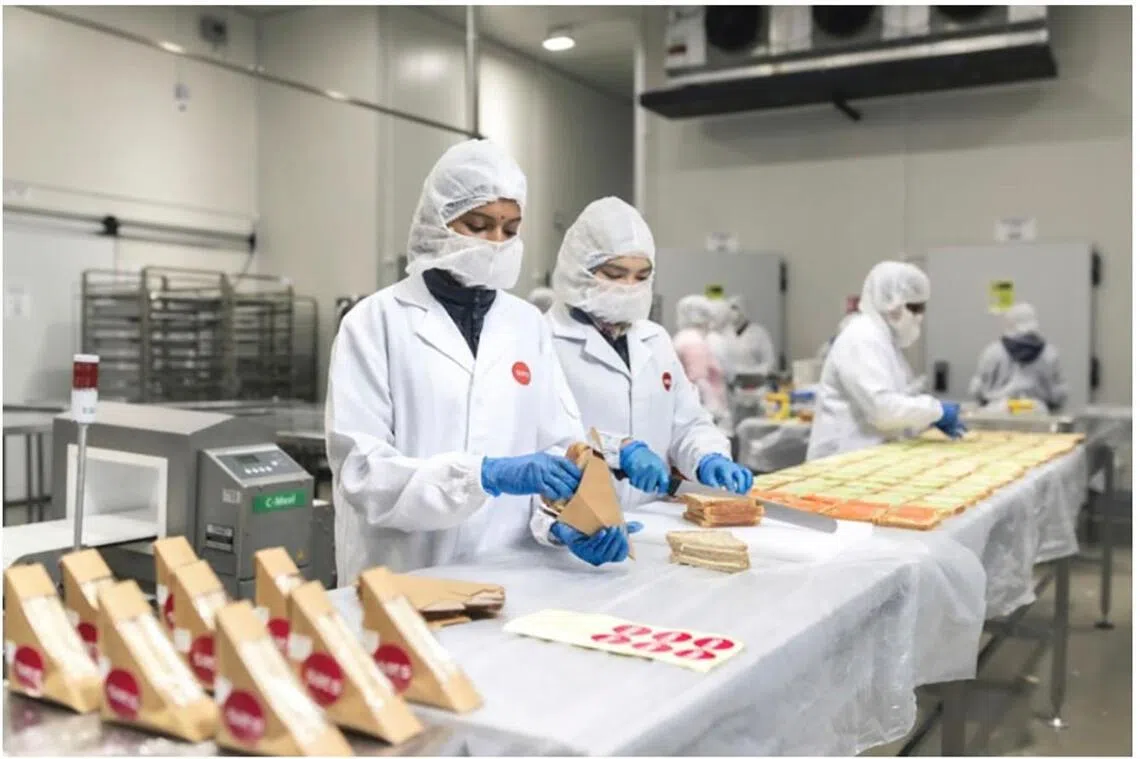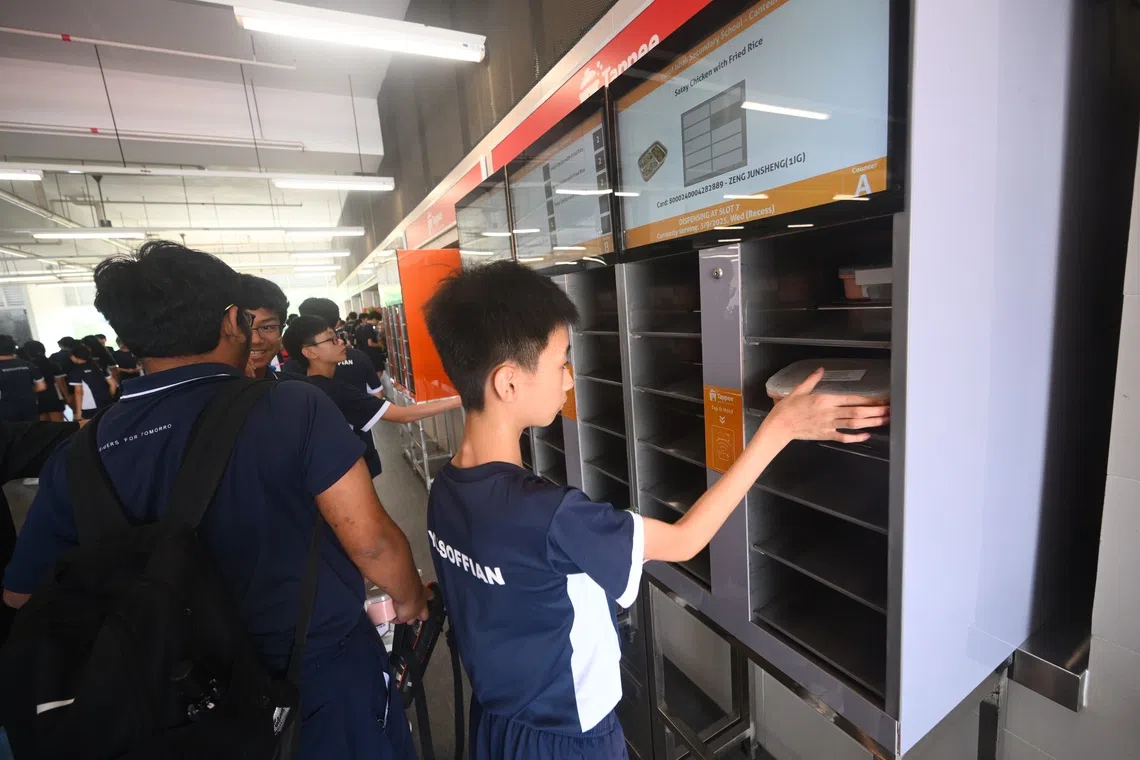Sats to run hybrid school canteen model at Hwa Chong Institution from 2026
Sign up now: Get ST's newsletters delivered to your inbox

Recess time at Hwa Chong Institution on Oct 17.
ST PHOTO: NG SOR LUAN
Follow topic:
- Hwa Chong Institution will partner with Sats in 2026 to revamp its canteen with a hybrid model, including pre-ordered bentos via an app.
- This change aims to cut queues and ensure nutritional needs are met, mirroring a successful pilot at Yusof Ishak Secondary with Sats.
- While many schools face canteen vendor shortages, MOE supports existing stallholders and explores models to help schools in need.
AI generated
SINGAPORE – Students at Hwa Chong Institution (HCI) can order lunch bentos through an app when the school teams up with airline caterer Sats to revamp its canteen operations in 2026.
HCI is among a growing number of schools that have turned to external food operators
In response to queries, an HCI spokeswoman said Sats will run both the high school and college canteens under a hybrid model that combines freshly cooked meals from on-site stalls with pre-packed options prepared in a central kitchen.
Under the new system, the institution’s 4,300 students and staff can pre-order bento sets through an app, as well as buy meals and desserts from stalls on campus offering options such as Indian fusion, Chinese cuisine and soft-serve yogurt. The meal prices have not been finalised yet.
HCI teacher Charles Low, a member of the canteen management committee, said feedback from students about long recess queues prompted the school to explore new operating models.
It was also a challenge for the high school’s existing nine food stalls and one drink stall to keep prices affordable amid rising prices of ingredients as they operate independently, he said.
Mr Low said the school was intrigued by Sats’ hybrid model, which is said to be able to cut queue time to about three minutes with automated meal dispensers.
Before making the switch, HCI consulted students, staff and parents through assemblies, meetings and food-tasting sessions.
Sats conducted a large food-tasting event in October 2024 for about 200 participants – students, teachers and parents – from both the high school and college.
“They weren’t confirmed as our partner yet, but they wanted everyone to understand what such a meal model would look and taste like,” said Mr Low.

HCI is among a growing number of schools which have turned to external food operators to replace traditional canteen stallholders.
ST PHOTO: NG SOR LUAN
At the session, participants sampled Chinese food, pasta and Western options, among others.
“Some people liked it a lot. Others were neutral,” he said, adding that Sats’ menu will vary monthly to give students more options.
The spokeswoman said the school is grateful for the contributions of its existing stallholders, some of whom have been with it for more than 20 years. The school will support them in finding employment with Sats in the new canteen.
The Straits Times reported in September that 13 schools – including Radin Mas Primary and Dazhong Primary – will switch to a central kitchen meal model from January 2026, where a single operator manages their canteen, amid difficulties in finding stallholders.
The Ministry of Education had said then that the model is being expanded to more schools after Yusof Ishak Secondary School piloted it with Sats in 2022.
A Sats spokeswoman said in response to queries that the company is “proud” to partner MOE to develop this meal model that addresses the growing challenge of canteen vendor shortages in schools.

Student meals are prepared in Sats' kitchen facilities before being delivered to schools.
PHOTO: BLANGAH RISE PRIMARY SCHOOL
“The pilot project, conducted with Yusof Ishak Secondary School for more than three years, has successfully established a benchmark that is now being rolled out commercially and at scale,” she said, adding that food preparation in a central kitchen boosts efficiency and resilience in school meal provision.
Yusof Ishak Secondary’s canteen now runs on a hybrid model, similar to the one planned for HCI, combining meals prepared in Sats’ central kitchen with supplementary food options on campus.
Students can collect pre-ordered meals from automated dispensers using their registered ez-link cards.

Yusof Ishak Secondary School students taking meals from the meal dispensers during recess on Sept 3.
ST PHOTO: AZMI ATHNI
The school has also worked with Sats to operate three stalls offering snacks, noodle soup and fresh fruit, alongside vending machines for beverages, snacks and hot sandwiches.
Yusof Ishak Secondary principal Chen Ziyang told ST in September that with all these options, waiting times have been “significantly reduced” as the automated dispensers enable food collection within five minutes during peak periods.
Apart from Yusof Ishak Secondary, Blangah Rise Primary School had also engaged Sats to cater meals in 2021. The school will switch to another vendor, Gourmetz, in 2026.
While most schools have enough canteen stalls, MOE had said some are finding it more challenging to fill vacancies despite low rents.
“Schools also face competition for stallholders from foodcourts, hawker centres and other public eating houses, which serve a greater customer base,” the spokesman said.
While the central kitchen model offers a potential solution, MOE said the existing individual stallholder system remains the default model for school canteens.
“MOE will continue to support these schools, such as by seeking favourable utility rates from the energy market and charging nominal rental fees for canteen stalls,” said the spokesman.
The ministry is also exploring other models to give schools more options.
Correction note: This story has been edited for clarity.


